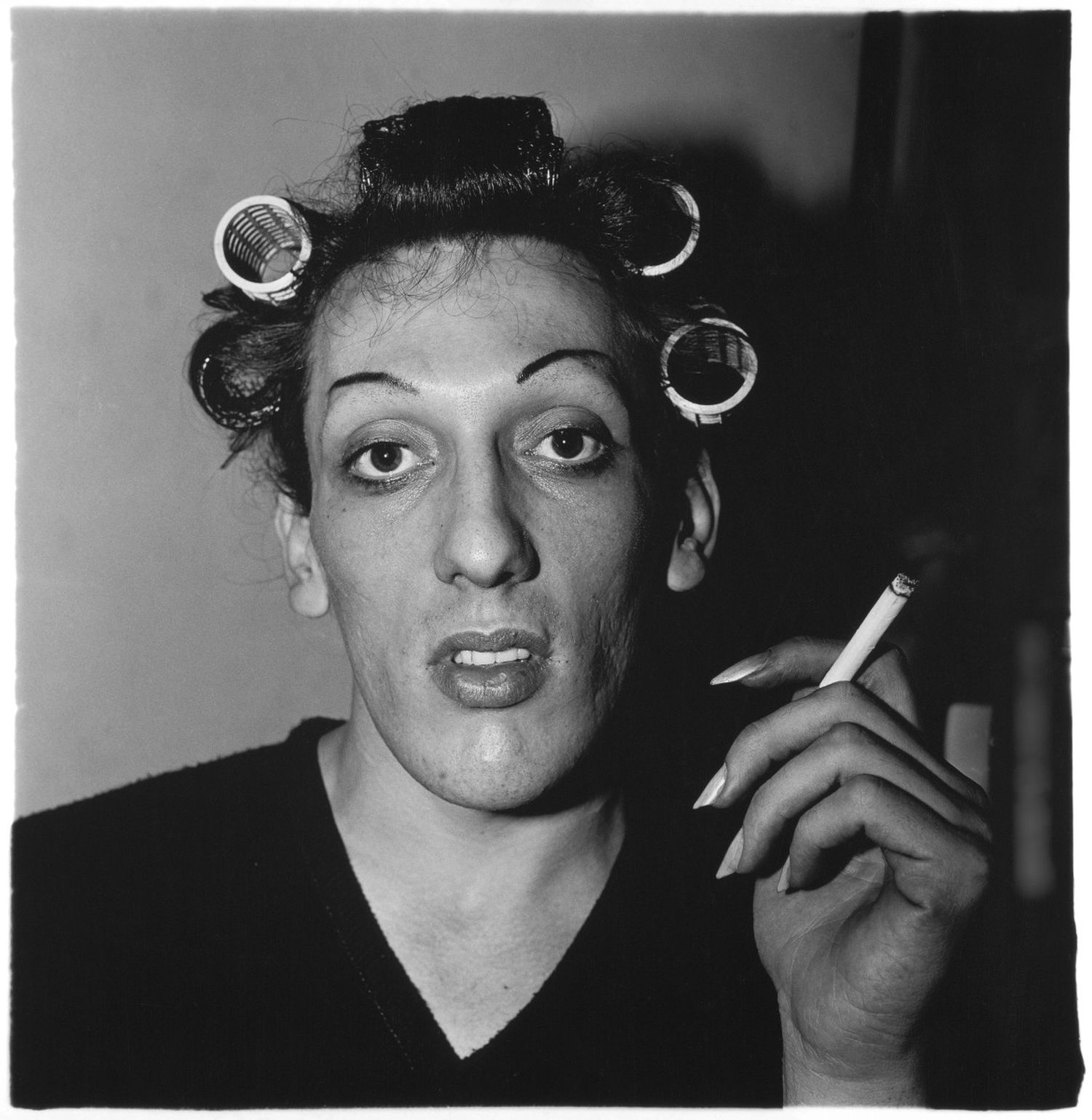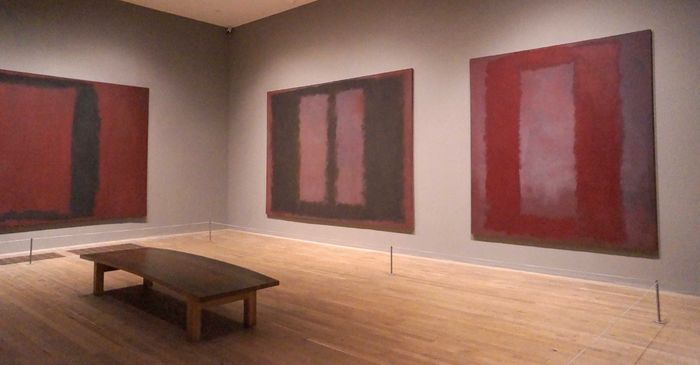I didn’t quite know how to react when I first encountered Diane Arbus’ work. I knew that her photographs were captivating but I couldn’t explain why, or whether this was a good thing.
Diane Arbus (née Nemerov) was born in New York in 1923 to a Jewish couple who had immigrated from Soviet Russia. At the age of 18 she married Allan Arbus, with whom she launched a career in photography, shooting for various fashion advertisements. Their work soon reached dizzying heights of publicity, including a feature in Vogue magazine. But the strains and pressures of fashion photography led Diane Arbus to quit the couple’s business in pursuit of her own artistic vision. The pair eventually split up in 1959, but remained good friends for the rest of their lives.
It was not until she met Lisette Model, a tutor at New York City’s New School, that Arbus discovered her own path. At first, Arbus felt that it was impossible for her to photograph what she really wanted to. But with Model’s encouragement, Arbus eventually conceded that she wished ‘to photograph what is evil.’
But what did she mean by ‘evil’? Did she want her subject-matter to be evil? Intrinsically? Extrinsically? How are we to interpret her photographs if this was what incentivised her to take them? Questions, questions…
It was later explained that what Arbus had described as ‘evil’ was in fact, anything ‘forbidden’. She wanted to photograph what was‘too dangerous, too frightening, too ugly for anyone else to look at.’ To return to her original phrasing, what Arbus wanted to capture was the imprint of evil, not evil itself. She wanted to photograph people on the fringes of society.
However, it was clear that Arbus saw more in these people than simply their exclusion. They filled her with a kind of awe. And it was, it seems, a two-way street. Arbus was known for her intensity and wit and extraordinary ability to draw people out of themselves. But this came at a personal price, or what Arbus described as a ‘kind of two-faced[ness]’. She went on to explain that ‘I hear myself saying, ‘How terrific.’ . . . I don’t mean I wish I looked like that. I don’t mean I wish my children looked like that. I don’t mean in my private life I want to kiss you. But I mean that’s amazingly, undeniably something.’
A work of art can mean many things to many people. But when the artist articulates their own feelings about it, the piece becomes inexorably something, with defined moral, psychological and philosophical edges and corners. The above account is unflinching; it is awe-struck and it is cruel. If we graft it onto her photographs, do we see and understand them in a different light?
Arbus commonly called her subjects ‘freaks’, but she did so ‘affectionately’. In her own words: ‘there is a quality of legend about freaks. Like a person in a fairy-tale who stops and demands that you answer a riddle.’
"there is a quality of legend about freaks. Like a person in a fairy-tale who stops and demands that you answer a riddle."
But even so, the line between empathy and morbid curiosity becomes ever finer. Although not as dehumanising as Bruce Gilden’s photography, Arbus’ photos are uncompromising, and predominantly of disadvantaged people. Arbus conceded that a lack of adversity in her childhood caused her to crave it in adulthood. With this in mind, another line is blurred, and that is one of power. Did subject and photographer have equal share in it?
In particular, the series ‘Untitled’ (1969-71) is morally questionable: its subjects were intellectually-disabled patients. Was this exploitation on Arbus’ part, or should we first contextualise the ethics of her choices before making these accusations? Were her motives more humanistic, more sympathetic, than we are willing to recognise? I have thought about this for a while now, and I find myself leaning more towards a defence of her work than an attack.
People suffering from marginalisation must be seen before others can choose not to see them. What Arbus did when she photographed these people was give them back something that had been stolen from them: their visibility. But this does not guarantee a sound ethical foundation to her work.
As Jed Perl, in his critique in The New Republic, put it: ‘Arbus is one of those devious bohemians, who celebrate other people’s eccentricities and are all the while aggrandizing their own narcissistically pessimistic view of the world.’
But I think this is deeply cynical. In my opinion, Arbus’ subjects retain (and even gain or regain) their power. This power can be better understood by its effect – for example, Sandra Phillips, senior curator of photography at the San Francisco Museum of Modern Art (SFMOMA), explained that many viewed the ‘unambiguous’ portrait of a young man in curlers as ‘confrontational’.
But to be confrontational, you must have power, surely? This remark strikes me as a testament to Arbus’ accomplishment. Arbus’ photographs confront the viewers with their own prejudices and preconceptions – this is the spirit of ‘evil’ pervading her work. Who are they to deny certain people the right to be seen or respected?
One might argue that Arbus’ photography could have been less intrusive, and that her work is an example of morbid fascination masquerading as art. However, I believe there is an acceptable motivation behind her style. Described as ‘a little cold, a little harsh’ by herself, Arbus’ photographs follow the advice of her tutor, Lisette Model: the more specific you are in a photograph, the more general its appeal will be.
I do not see Arbus as a fundamentally cynical or exploitative, artist. On the contrary, I think her works confront her viewers with two important questions: how do you see yourself? and how different are we, really?
In all of Arbus’ photographs, the lens is level with the subject. She does not ennoble them by placing it low, nor diminish them by placing it high. Instead, it is level, it is democratic. It is a moment of shared humanity. And this, I believe, is what makes her photographs captivating.


